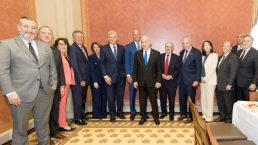America’s Response to 9/11 in the Lens of History
By Norman Solomon, Tom Dispatch
[Today’s piece is adapted from the introduction to Norman Solomon’s book War Made Invisible: How America Hides the Human Toll of Its Military Machine (The New Press, 2023).]
The day after the U.S. government began routinely bombing faraway places, the lead editorial in the New York Times expressed some gratification. Nearly four weeks had passed since 9/11, the newspaper noted, and America had finally stepped up its “counterattack against terrorism” by launching airstrikes on al-Qaeda training camps and Taliban military targets in Afghanistan. “It was a moment we have expected ever since September 11,” the editorial said. “The American people, despite their grief and anger, have been patient as they waited for action. Now that it has begun, they will support whatever efforts it takes to carry out this mission properly.”

As the United States continued to drop bombs in Afghanistan, Defense Secretary Donald Rumsfeld’s daily briefings catapulted him into a stratosphere of national adulation. As the Washington Post’s media reporter put it: “Everyone is genuflecting before the Pentagon powerhouse… America’s new rock star.” That winter, the host of NBC’s Meet the Press, Tim Russert, told Rumsfeld: “Sixty-nine years old and you’re America’s stud.”
The televised briefings that brought such adoration included claims of deep-seated decency in what was by then already known as the Global War on Terror. “The targeting capabilities, and the care that goes into targeting, to see that the precise targets are struck, and that other targets are not struck, is as impressive as anything anyone could see,” Rumsfeld asserted. And he added, “The weapons that are being used today have a degree of precision that no one ever dreamt of.”
Recent Posts
Why Are Democratic Lawmakers Still Meeting With Netanyahu?
July 12, 2025
Take Action Now Pictures show Democrats like Chuck Schumer standing next to Netanyahu, smiling.By Sharon Zhang, Truthout A bipartisan group of…
Stop Israel’s Dystopian “Humanitarian City” Plan—Before It’s Too Late
July 11, 2025
Take Action Now For the past 20 months, the world has watched—and largely enabled—a genocidal campaign in Gaza. Over 55,000 Palestinians have been…
The “Liberal” International Order Is Criminalizing Palestine Protests
July 11, 2025
Take Action Now As Western governments repress Palestine solidarity and enable Israel’s impunity, the “liberal international order” is no longer…
Politicians Are Betraying Gen Z On Climate
July 10, 2025
Take Action Now While Gen-Zers thrift, knit, crochet, and find other ways to reduce our footprints, Trump and the GOP are greenlighting more climate…




